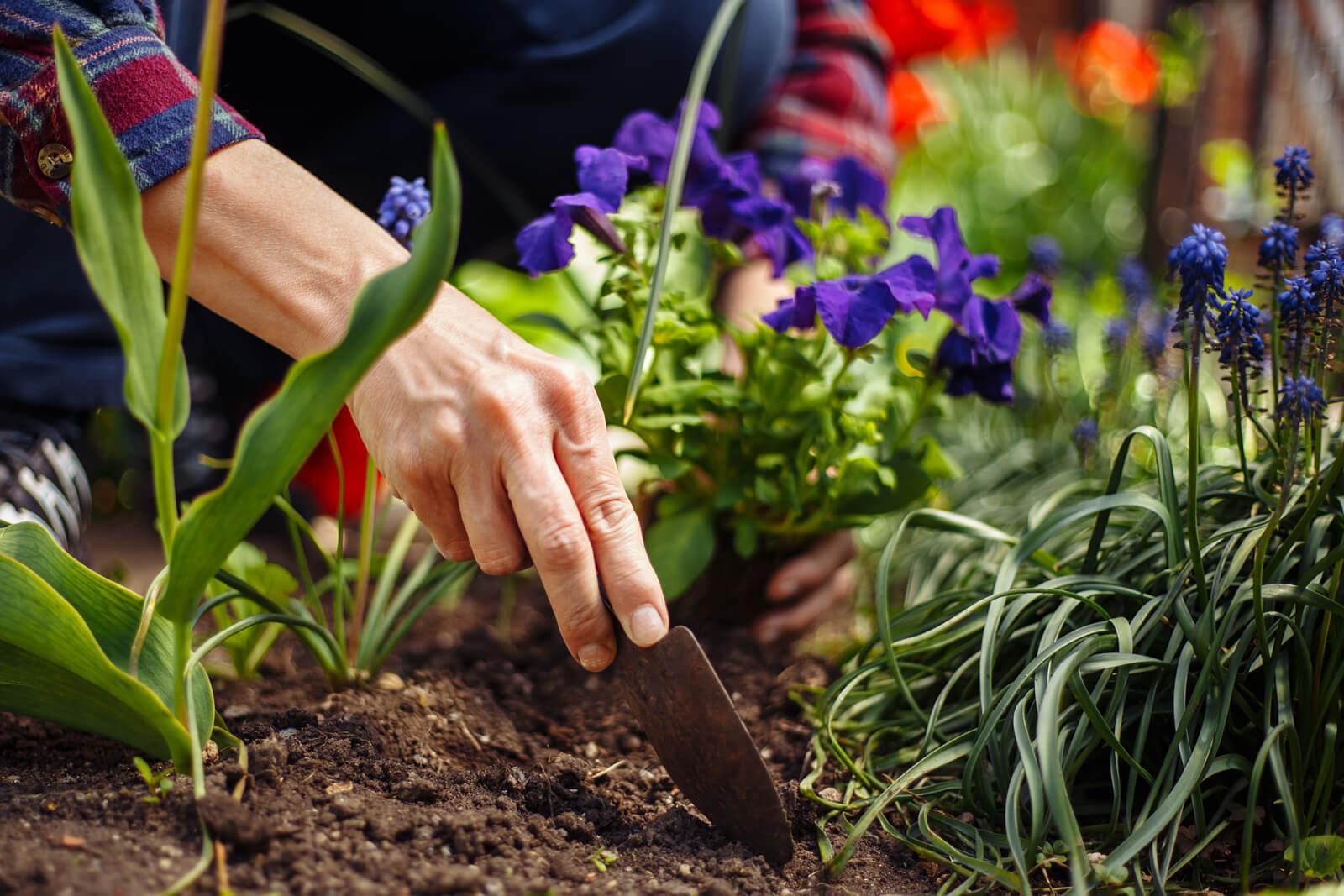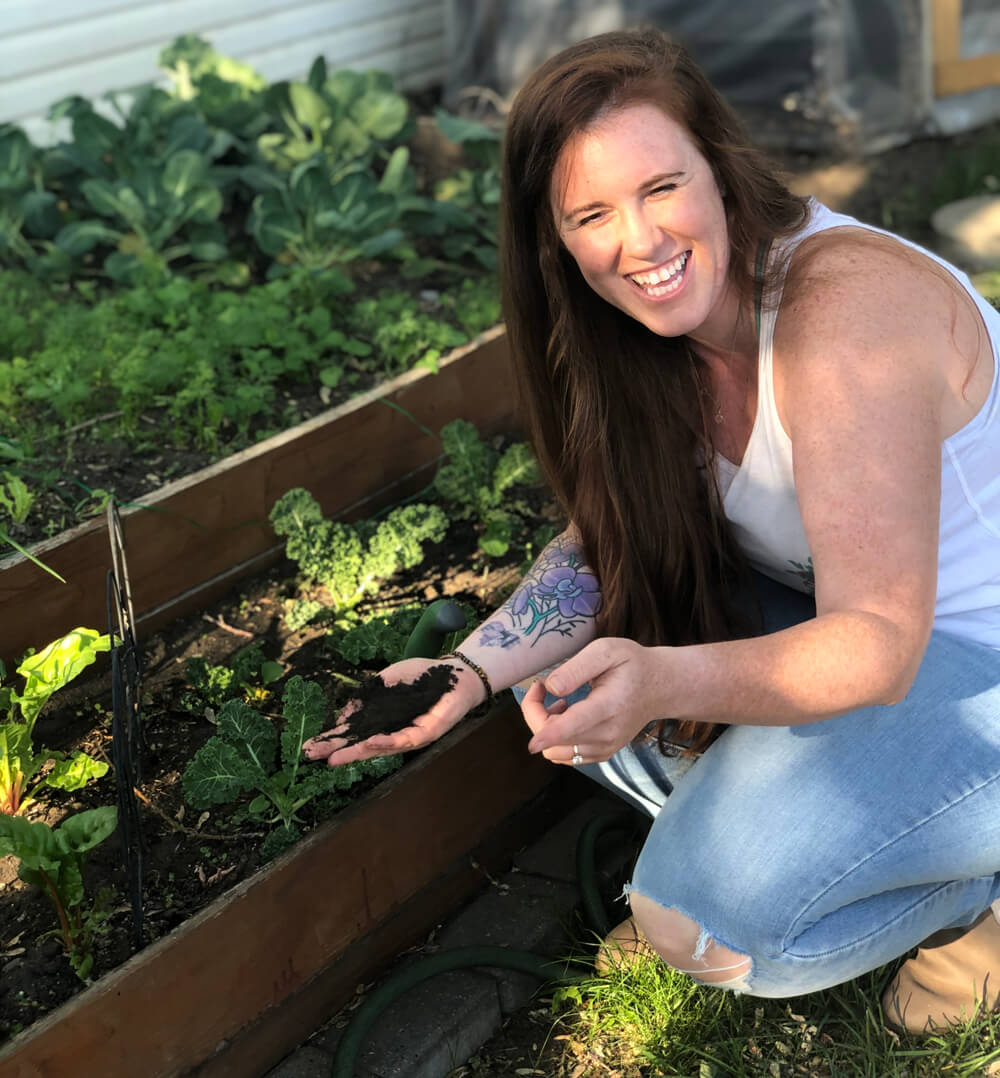June 16, 2022

Is your soil the right pH?
Soil scientist offers tips to improve garden health
Journalism Intern, Landscape Ontario
It is easy for gardeners to get swept up by fancy (and pricey) fertilizers and garden products that promise to make plants grow big and strong.
However, Ashley Esakin, an agronomist from Saskatewan, Alta., has a different take. Esakin decided to use her knowledge to help gardeners struggling with their plant health during the pandemic by starting a YouTube channel and website.
The importance of soil pH
Soil pH is measured on a 14-point scale.
Higher pH levels, otherwise known as alkaline soil, register at seven or above. This can indicate an excessive amount of calcium, which blocks the plant root’s ability to absorb other vital nutrients.
“A common misconception, particularly in Canadian gardens, is that our soil is lacking calcium and magnesium, so people will grind eggshells or put all these fancy products just to get the same result,” Esakin said.
However, when there is no calcium present — meaning a lower pH or acidic soil, there is a risk of too many nutrients getting absorbed. This absorption leads to an overdose of minerals like magnesium. Low pH is defined as below seven on the scale.
“If we look at the pH relative to bioavailability of nutrients, there are areas on the pH scale where nutrients are simply not bioavailable, which can lead to root rot, or stunted growth,” Esakin explained.
The bioavailability of nutrients refers to the amount of nutrients that are being absorbed. When pH is too high or low there is an imbalance, leading to these harmful implications.
“When we have a pH that is around a 6.5 or hovering around that area, we can maximize our yield, the colours and the foliage we get and it can also help to prevent pests,” Esakin said.
Esakin explains the importance of caring not only for the plants on top, but also the soil below.
 Ashley Esakin.
Ashley Esakin.
How to test pH
There are a number of ways to test your soil to ensure it isn’t too acidic or alkaline.
“You don’t have to get fancy about testing your pH,’ Esakin said. “There are tests like the baking soda method or vinegar method, or you can even buy testing kits from your local gardening centre.”
The baking soda and vinegar method is an old trick that can be done at home.
Start by taking a sample of about two tablespoons of your garden soil. Add a half cup of vinegar and wait for a reaction.
“If you get an effervescence or bubbling, then it is a sign of acidic soil,” Esakin said.
If the soil doesn’t react, try the experiment again by adding the same measurements of soil to a new bowl, but replace the vinegar with half a cup of baking soda. Also, add a bit of water to get the mixture to combine. If this one bubbles, that means your soil is alkaline.
If you are looking for a testing method that requires less chemistry, there are also meters that test these levels.
Esakin explains how to choose and use this product on her YouTube channel.
I know my pH level, now what do I do about it?
Whether you discover your soil pH is high or low there are methods to get it back on track.
Esakin recommends trying general methods to neutralize the soil, such as composting.
“Adding compost and top-dressing each year will work great to neutralize that pH. Mulching each year is also very important since it will help to keep that compost above the soil moist, which will help with decomposition and nutrient release.”
However, Esakin warns it is easy to get carried away with composting, and to be mindful about the amount you use.
“Less is more,” she said. “Say you had tomato plants last season and you were to take all of those and put it in the blender and grind it down, how many inches would that cover. That’s what you want to add because that is what you have taken out.”
If these methods still don’t work to neutralize your soil, adding sulfur is known to bring a pH level down, whereas lime will bring the level up.
Overall, Esakin hopes everyone can take on their garden and find methods that work best for them.
“It’s easy for me to say ‘water your garden six days a week for 45 minutes,’ but everyone’s area is different. You might have sandier soil or live in a more humid area. I hope that everyone can be their own soil scientist and find the best methods for their garden.”